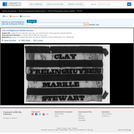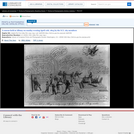
A satire condemning the duplicity and conspiracy of the "Bucktail" faction of New York Democrats in their April 1824 ouster of New York's ex-governor DeWitt Clinton from his post as canal commissioner. The Library's impression of the print has the missing letters in the names of the figures filled in by hand. Twelve men stand in a room, with a platform, table, and lamp on the right. On the left G[ardiner] is about to exit saying, "I will run home and ask the people how they will like it before I give my vote." To the left of the platform P[ierson] says to B[ourne], "I hope we shall give you a united vote for the removal of Mr. Clinton I have long wished an opportunity to have revenge on him for blowing up the old Burr Conspiracy." B[ourne]: "I am delighted with the prospect! Clinton has always been my devil--it will be impossible to pull him down to our level if we do not dishonor him. I recommend secrecy as success depends upon our taking the members by surprise at the moment of adjournment." Others in the room speak (counterclockwise, from the far left): S[eama]n: "I beg of you to pause ere you adopt any more lobby measures--we were sent here for public good--yet all our measures have for their object individual benefit. This base deed will produce a reaction and may make him Governor. The republican party so justly famed for justice and liberality will in their haste to free themselves from this odium forget and forgive everything." M[ors]e: "The North river squad think the Canal a benefit to ourside [sic] of the City and they will therefore disapprove our dishonoring its founder." D[rake]: "I wish I could be excused from voting, my conscience tells me it is wrong my judgment tells me it will dishonor the State--but the lobby requires it and it must be done." H[yatt]: "I vote here against the measure but if a majority of this meeting decide in its favor I will vote for it in the house tomorrow as my creed is the majority must rule." B[enedict]: "It is inconsistant with a Soldiers honor to build up or pull down any man to gratify angry or sordid passions --besides this lobby influence must be check'd or it will ruin the State." [Henry] W[heaton]: "I will support the measure to punish him for the injury he did our profession by recommending the fee bill and extending the jurisdiction of the judges." [Clarkson] C[rolius]: "I will support the measure in hopes of appeasing the wrath of the Bucktails altho' I fear they are too hard baked to be gull'd in this way. Besides My Insurance Co. & the lobby." W[ar]d: "My vote shall be given for this removal because he is the author of all our troubles about the electoral law. When Govr. he recommended to the Legislature the restoration of the peoples rights." T[own]: "It is true he has been my Benefactor and I ought to shudder at the deed but three months tuition in the hands of the lobby does away these squeamish feelings." Above, in a cloud, is Columbia with an American flag and an eagle, saying, "I renounce them and their ways."|Title appears as it is written on the item.|Murrell, p. 98.|Weitenkampf, p. 21.|Forms part of: American cartoon print filing series (Library of Congress)|Published in: American political prints, 1766-1876 / Bernard F. Reilly. Boston : G.K. Hall, 1991, entry 1824-1.
- Subject:
- History
- U.S. History
- Material Type:
- Diagram/Illustration
- Primary Source
- Provider:
- Library of Congress
- Provider Set:
- Library of Congress - Cartoons 1766-1876
- Date Added:
- 06/08/2013
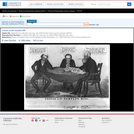

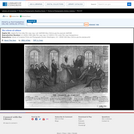
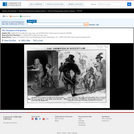
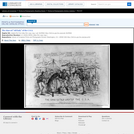
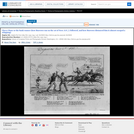
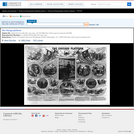
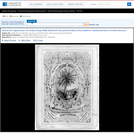


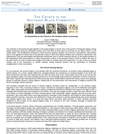



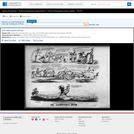
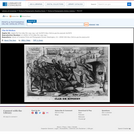
![[Clay-Frelinghuysen Campaign Badge]](https://img.oercommons.org/160x134/oercommons/media/upload/materials/screenshots/materials-course-76039.png)
